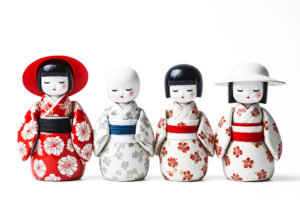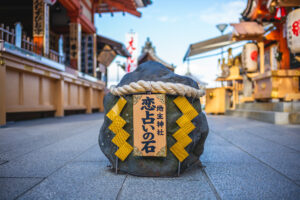In the heart of Japan’s Saga Prefecture, Arita Ware—also known as Arita porcelain—has been capturing the essence of Japanese artistry and craftsmanship for over four centuries. Renowned for its intricate designs, delicate craftsmanship, and enduring quality, Arita Ware stands as a testament to Japan’s rich cultural heritage and its enduring influence on the world of ceramics. From its historical origins to its modern interpretations, Arita Ware embodies a journey through time, showcasing the evolution of porcelain artistry. As we explore the elegance of Arita Ware, we delve into the stories of the artisans, the distinctive techniques, and the cultural significance that make these pieces Japan’s porcelain pride.
Unveiling the Charm of Arita Ware: A Journey Begins
The exploration of Arita Ware begins in the quaint town of Arita, located in Saga Prefecture, where the discovery of kaolin clay in the early 17th century marked the birth of Japan’s porcelain industry. Arita Ware quickly distinguished itself through its quality and beauty, becoming a coveted item domestically and internationally. The charm of Arita porcelain lies not only in its visual appeal but also in the dedication to craftsmanship that each piece represents. As we journey through the history and artistry of Arita Ware, we uncover the layers of skill and tradition that contribute to its timeless allure.
The Birth of Arita Ware: A Historical Overview
Arita Ware’s story is rooted in the early 17th century when the discovery of kaolin clay in the Arita region laid the foundation for the porcelain industry in Japan. Korean potter Ri Sampei is credited with the first successful firing of Arita porcelain, setting the stage for a flourishing craft. The availability of high-quality materials, combined with the ingenuity of local artisans, propelled Arita Ware to the forefront of ceramic artistry. As the demand for these exquisite pieces grew, Arita became synonymous with the finest porcelain, not just in Japan but across the globe.
Exploring the Unique Characteristics of Arita Porcelain
What sets Arita Ware apart is its unique blend of artistry, material, and technique. The porcelain is celebrated for its pure, white base, which provides a perfect canvas for intricate designs ranging from traditional blue and white motifs to multi-colored enamel decorations known as "Arita polychrome." Arita porcelain is characterized by its exceptional durability and translucency, a result of the high firing temperatures and the quality of clay used. Each piece is a testament to the meticulous attention to detail that Arita artisans invest in their craft.
The Artisans Behind Arita Ware: Masters of Craft
The creation of Arita Ware is a testament to the mastery of its artisans. From shaping the clay to painting the final designs, each step is steeped in tradition yet allows for personal expression. The artisans’ skills have been passed down through generations, with each era introducing its own innovations while preserving the core techniques that define Arita porcelain. The dedication of these craftsmen ensures that the essence of Arita Ware—its beauty, quality, and heritage—continues to thrive.
Arita Ware in the Edo Period: A Golden Age
The Edo period (1603-1868) marked a golden age for Arita Ware, as it became an integral part of both domestic life and international trade. The introduction of the Imari port for export gave rise to "Imari Ware," a term often used interchangeably with Arita porcelain in the context of pieces made for export. During this time, Arita Ware was highly prized by European nobility, and its influence on Western ceramic art was profound. The period saw the development of signature styles and techniques that remain hallmarks of Arita porcelain.
The Techniques That Define Arita Porcelain’s Beauty
The beauty of Arita Ware is the result of a combination of techniques that have been refined over centuries. The use of cobalt blue underglaze and overglaze enamels in a variety of colors allows for a wide range of artistic expression. The intricate process of hand-painting designs, along with the use of stencils and transfer printing, has evolved over time but remains grounded in tradition. High firing temperatures are crucial for achieving the porcelain’s characteristic hardness and translucency, making each piece both a work of art and a functional object.
Arita Ware Today: Tradition Meets Modernity
In contemporary times, Arita Ware continues to evolve, blending traditional techniques with modern designs. Artisans are experimenting with new glazes and shapes, pushing the boundaries of porcelain artistry while respecting the legacy of their predecessors. Today, Arita Ware finds its place not only in museums and collections but also in everyday life, reflecting a seamless fusion of history and innovation.
The Global Journey of Arita Ware: From Japan to the World
Arita Ware’s journey from a small town in Japan to the global stage is a testament to its enduring appeal. Throughout its history, Arita porcelain has been exported and admired around the world, influencing ceramic traditions across Europe and Asia. Today, Arita Ware continues to captivate collectors and enthusiasts, embodying the global exchange of culture and artistry.
Collecting Arita Ware: Tips for Beginners
For beginners interested in collecting Arita Ware, it’s essential to start by researching and learning about the different styles and periods. Visiting museums and exhibitions can provide valuable insights, as can consulting with experienced collectors. Pay attention to the quality of the porcelain, the intricacy of the designs, and the authenticity of the pieces. Starting with smaller items before investing in more significant, expensive pieces can build a meaningful and cohesive collection over time.
The Cultural Significance of Arita Porcelain in Japan
Arita Ware holds a special place in Japan’s cultural landscape, symbolizing the nation’s artistic achievements and its history of trade and cultural exchange. It represents a bridge between the past and the present, encapsulating the spirit of innovation and the respect for tradition that characterizes Japanese art and culture. Arita Ware is celebrated through festivals, exhibitions, and workshops, fostering a continued appreciation for this exquisite form of porcelain.
Future Prospects: The Evolving Legacy of Arita Ware
The future of Arita Ware looks promising, as new generations of artisans embrace the challenge of keeping this traditional art form alive while making it relevant for contemporary audiences. Initiatives to innovate within the craft, combined with efforts to promote Arita Ware internationally, ensure that this legacy will continue to flourish. As Arita Ware evolves, it remains a symbol of Japan’s enduring cultural heritage and its capacity for creativity and renewal.
Arita Ware Festivals and Exhibitions: A Must-Visit for Enthusiasts
For those passionate about Arita Ware, visiting festivals and exhibitions offers an unparalleled opportunity to experience the artistry firsthand. The Arita Ceramic Fair, held annually in Golden Week (late April to early May), is one of Japan’s largest ceramics markets and a vibrant celebration of Arita porcelain. Additionally, museums dedicated to Arita Ware, such as the Kyushu Ceramic Museum, provide in-depth insights into the history and techniques of this captivating art form.
The exploration of Arita Ware reveals more than just the beauty and craftsmanship of Japanese porcelain; it uncovers a story of cultural resilience, artistic innovation, and global exchange. From its historical roots in the 17th century to its contemporary incarnations, Arita Ware continues to enchant with its elegance and quality. As we celebrate the legacy of Arita porcelain, we also look forward to its future, confident that it will continue to inspire and captivate generations to come. Arita Ware is not just Japan’s porcelain pride; it is a world treasure, emblematic of the enduring appeal of fine craftsmanship and artistic excellence.








